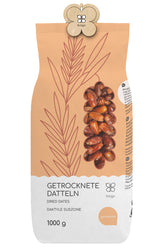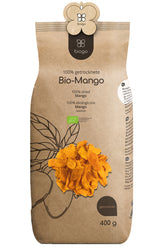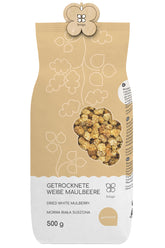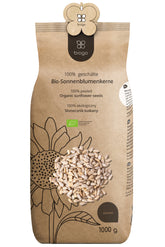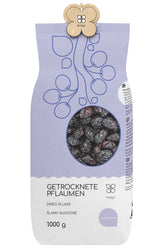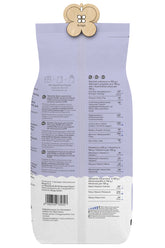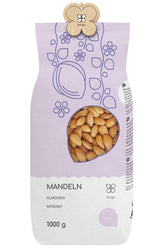In today's world, where health and sustainability are becoming increasingly important, the traditional Korean dish kimchi is growing in popularity. Far beyond Korea's borders, people are discovering the diverse benefits of this fermented vegetable dish. Kimchi is much more than just a tasty side dish – it's a true superfood that can support our health in many ways.
The origins of Kimchi
Kimchi has a long tradition in Korean cuisine and has been a staple food for centuries. The dish's origins can be traced back to the 7th century AD. At that time, fermented vegetables primarily served to preserve food through the winter. Over time, countless regional varieties developed, differing in ingredients and preparation methods.
Traditionally, Kimchi is made from napa cabbage, radish, garlic, ginger, and various spices. The fermentation process creates a unique flavor profile combining sour, spicy, and savory notes. Beyond its typical taste, Kimchi is also distinguished by its special health properties.
The health benefits of Kimchi
Kimchi is much more than just a tasty dish - it's a true superfood that can support our health in many ways. Especially its effects as a probiotic food are remarkable.
Probiotic effects
Through the fermentation process where lactic acid bacteria play a central role, Kimchi contains numerous healthy bacteria. These so-called probiotics colonize the gut after consumption and significantly contribute to strengthening our immune system. They promote gut flora, improve digestion, and can even alleviate issues like bloating, constipation, or diarrhea.
Antioxidant properties
In addition to probiotic bacteria, Kimchi contains numerous valuable nutrients like vitamins, minerals, and phytochemicals. Particularly the antioxidants in its ingredients play an important role for our health. They neutralize free radicals, which are responsible for many modern diseases like cardiovascular conditions or cancer.
Anti-inflammatory effects
Moreover, Kimchi also has anti-inflammatory properties. The phytochemicals in its ingredients - such as capsaicin, allicin, and sulforaphane - counteract inflammation in the body. This can have positive effects on conditions like joint pain, osteoarthritis, or rheumatism.
Cancer-preventive effects
Several studies even show cancer-preventive effects of Kimchi. The antioxidants and phytochemicals contained in the fermented vegetables can reduce cancer risk by inhibiting tumor formation.
Making Kimchi yourself
Given its many health benefits, it's no surprise that Kimchi is becoming increasingly popular. Those who want to experience the advantages of this fermented vegetable dish themselves can easily prepare Kimchi at home. All you need are a few ingredients and some patience for the fermentation process.
Ingredients for Kimchi
To prepare Kimchi, you primarily need Napa cabbage or radish as the main ingredient. Additionally, garlic, ginger, chili peppers, fish sauce, or salt are required. Depending on taste preferences, other ingredients such as carrots, spring onions, or coriander can also be added.
Step-by-Step Instructions
- Thoroughly wash, clean, and cut the main ingredient, either Napa cabbage or radish, into bite-sized pieces.
- Finely chop or grate the remaining ingredients such as garlic, ginger, and chili peppers.
- Mix all ingredients in a large bowl and knead vigorously until a smooth mass forms.
- Fill the Kimchi mixture into a container with a lid and let it ferment at room temperature for 3-7 days. Open the lid regularly to release gases.
- After the fermentation period, store in the refrigerator. The Kimchi can now be consumed as desired.
Versatile Uses for Kimchi
Kimchi can be incorporated into our daily lives in many ways. Besides the classic consumption as a side dish with rice or other dishes, Kimchi can also be used creatively in the kitchen.
Kimchi in Soups and Stews
The spicy flavor of Kimchi pairs perfectly with hearty soups and stews. Simply add some Kimchi at the end, and you have a delicious, probiotic dish ready to serve.
Kimchi Pancakes and Omelets
Kimchi can also be wonderfully integrated into pancakes or omelets. The tangy-spicy note gives egg dishes a special touch.
Kimchi Burgers and Wraps
For a special flavor kick, Kimchi works excellently as an ingredient for burgers or wraps. Combined with meat, vegetables, and sauces, it creates a varied, healthy fast-food dish.
Kimchi Dips and Spreads
Kimchi can also be wonderfully processed into delicious dips or spreads. Whether as a bread spread, dip for vegetable sticks, or topping for salads – the possibilities are endless.
Conclusion: Kimchi – A Traditional Superfood
Kimchi is far more than just a traditional Korean dish. As a probiotic superfood, it offers numerous health benefits and can be incorporated into our daily lives in many ways. Whether as a side dish, in soups, omelets, or dips – Kimchi enriches our diet with valuable nutrients and promotes our well-being.
Anyone who wants to experience the benefits of Kimchi for themselves can easily prepare this spicy vegetable dish at home. With just a few ingredients and some patience, you can make Kimchi to suit your own tastes. This way, we can effortlessly incorporate the flavor and health benefits of fermented vegetables into our daily lives.

